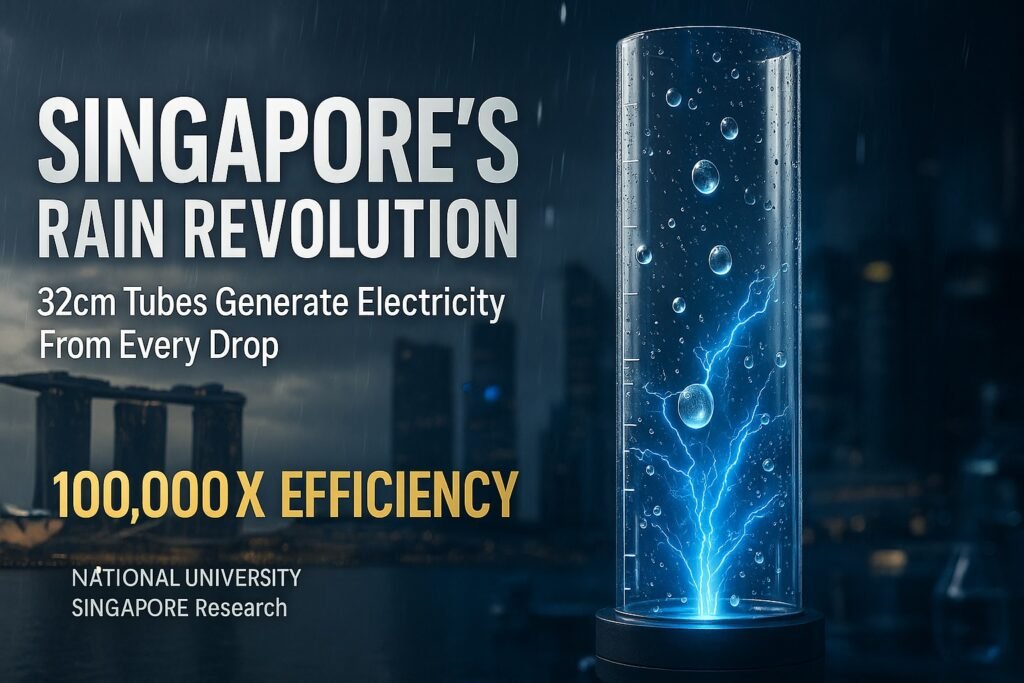Introduction: The Impossible Made Possible
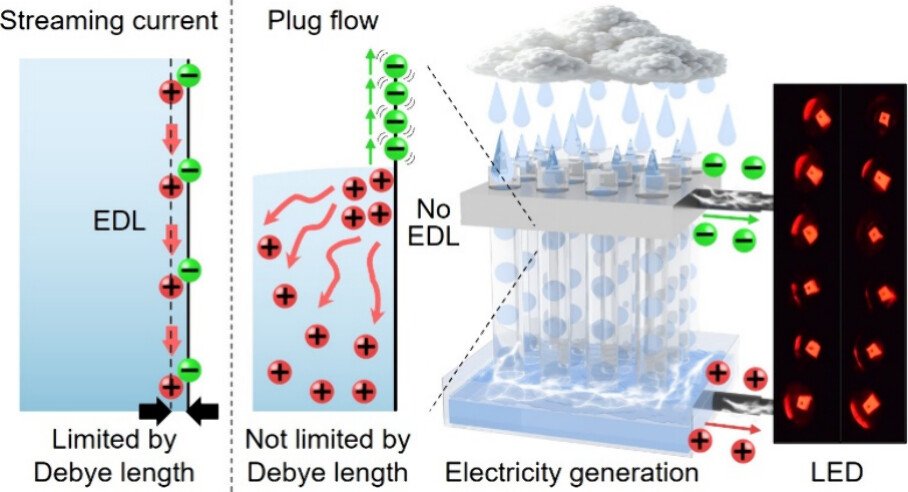
In the relentless pursuit of clean energy solutions, a groundbreaking discovery from Singapore rain electricity research has shattered the fundamental limitations of energy harvesting from water. Scientists at National University of Singapore have achieved what seemed physically impossible: generating substantial electricity from raindrops using simple plastic tubes smaller than a ruler.
Published in the prestigious journal ACS Central Science in April 2025, this revolutionary research demonstrates that a 32-centimeter tube with a 2-millimeter diameter can harvest energy from falling water with unprecedented efficiency. The breakthrough challenges decades of established physics and opens entirely new pathways for renewable energy generation in urban environments.
The implications extend far beyond laboratory demonstrations. In a world desperately seeking sustainable energy solutions, this technology promises to transform every rainy day into a power generation opportunity, turning Singapore’s tropical climate from a solar energy challenge into an electricity abundance advantage.
The Science Behind Singapore Rain Electricity Technology
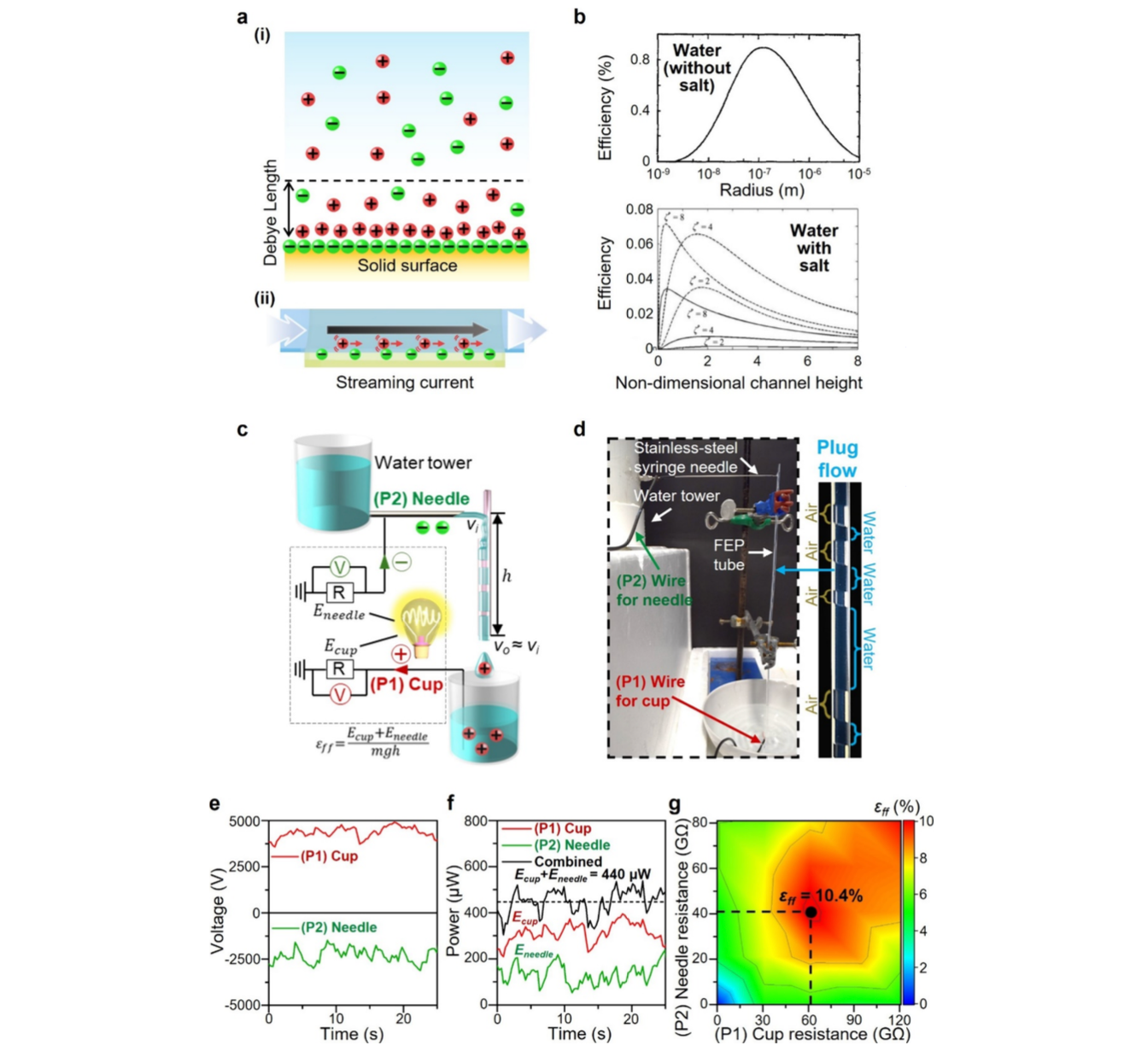
Revolutionary Breakthrough in Energy Physics
The core innovation lies in a phenomenon called “plug flow” – a unique pattern where water columns are naturally separated by air pockets as they move through vertical tubes. Unlike continuous water flow, plug flow creates discrete segments that fundamentally change the physics of charge separation at the solid-liquid interface.
Dr. Siowling Soh and her research team, including lead researcher Chi Kit Ao, discovered that this flow pattern breaks the fundamental limit imposed by the Debye length – a nanoscale barrier that has constrained energy harvesting efficiency for decades. Traditional streaming current systems become essentially useless beyond microscale dimensions, but plug flow maintains high efficiency even in millimeter-scale channels.
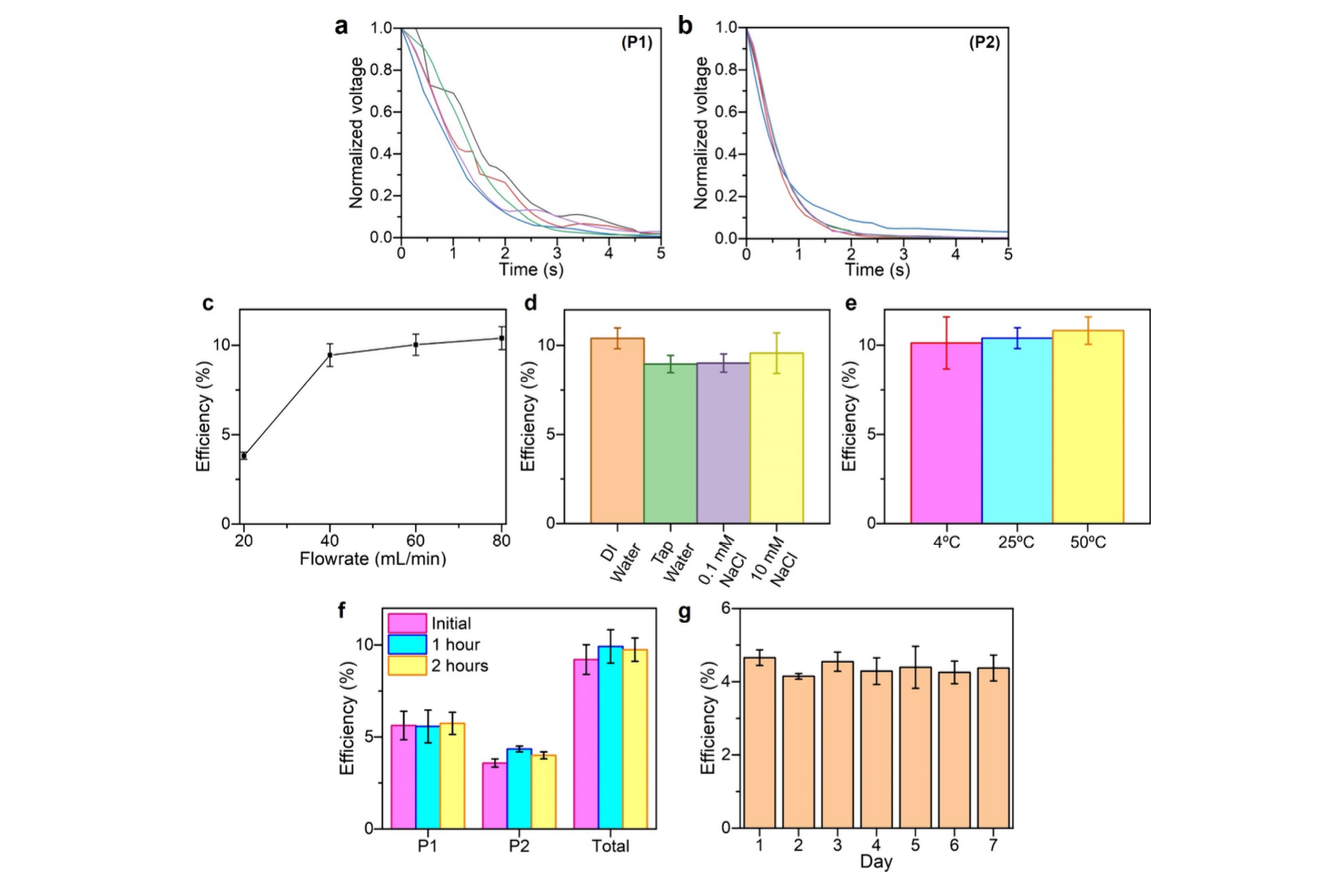
Unprecedented Performance Metrics
The experimental results demonstrate extraordinary efficiency improvements:
- Conversion Efficiency: Over 10% of gravitational potential energy converted to electricity
- Performance Gain: Five orders of magnitude (100,000x) more electricity generation than continuous flow systems
- Power Density: Approximately 100 watts per square meter of horizontal rain collection area
- Practical Output: Four parallel tubes generating 440 microwatts continuously
The team’s controlled experiments showed remarkable consistency across different environmental conditions. The system maintained over 85% of optimal efficiency using tap water, various salt solutions, and temperatures ranging from 4°C to 50°C, demonstrating robust real-world applicability.
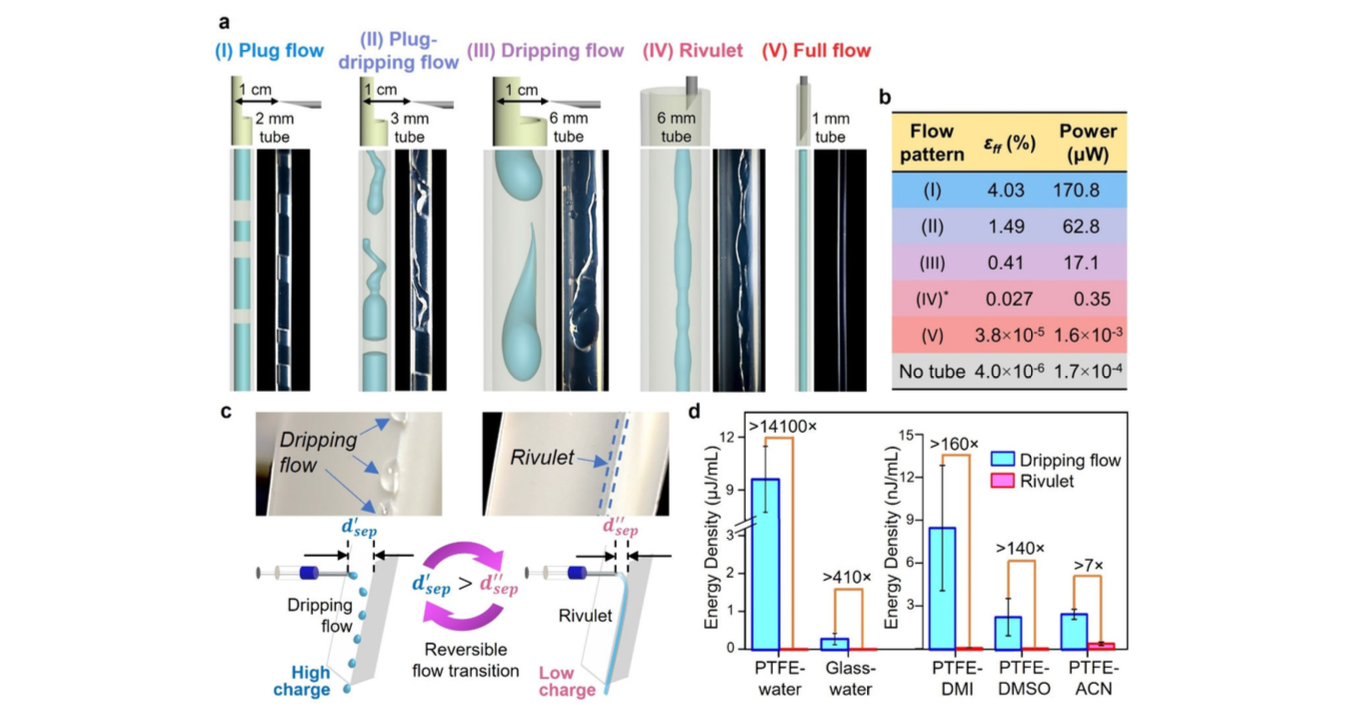
Market Impact and Commercial Applications
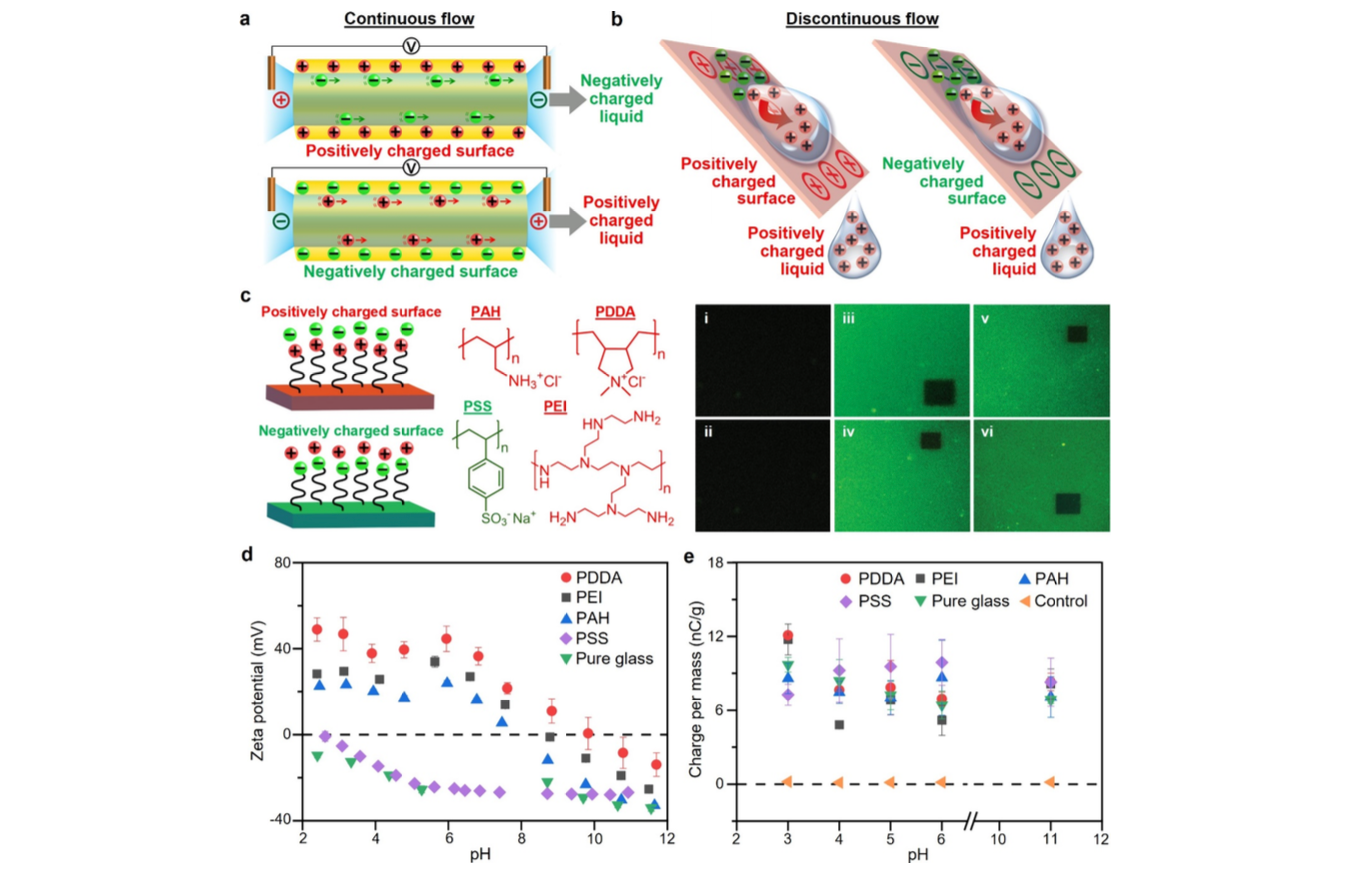
Addressing Global Energy Challenges
Singapore’s tropical climate receives approximately 200 rainy days annually, making rain-powered energy generation particularly relevant for Southeast Asian nations facing similar weather patterns. Unlike solar photovoltaic systems that lose efficiency during cloudy and rainy conditions, plug flow technology generates more electricity during heavy precipitation.
The timing of this breakthrough coincides with increasing global investment in distributed renewable energy systems. Similar to how China’s Betavolt BV100 nuclear battery promises 50 years of continuous power, this rain electricity harvesting offers long-term, maintenance-free operation through an entirely different mechanism.
Competitive Advantages Over Existing Technologies
This development parallels other breakthrough energy innovations like France’s Sweetch Energy breakthrough in osmotic blue energy, which also harnesses natural water properties for electricity generation. However, rain harvesting operates independently of saltwater access, making it applicable in urban environments worldwide.
Plug flow technology offers several distinct advantages:
- Continuous Power Generation: Unlike pulsed systems, maintains steady electricity output throughout rain events
- No Pre-charging Required: Operates immediately without surface preparation or energy input
- Scalable Design: Modular tube arrays enable customized power output for diverse applications
- Weather Independence: Performance improves during heavy precipitation when other renewables struggle
Practical Applications and Commercial Viability
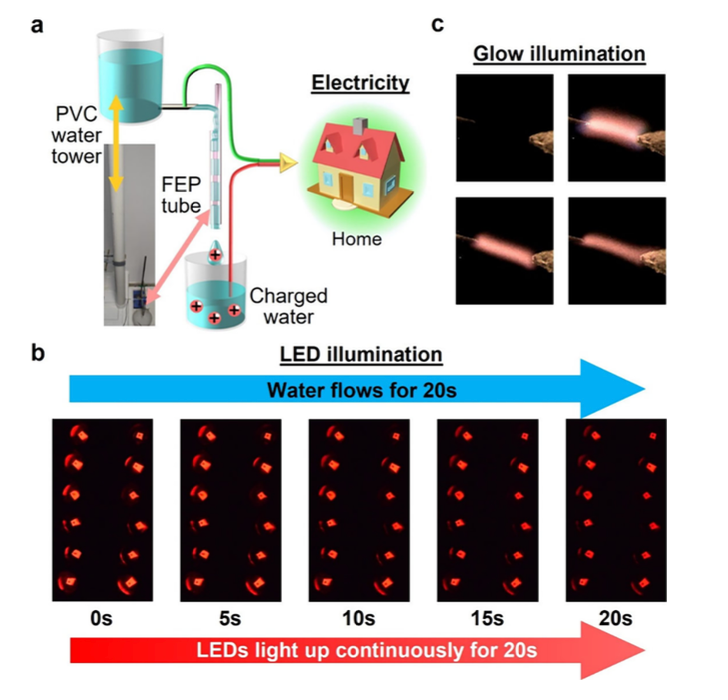
Urban Implementation Scenarios
Singapore’s dense urban environment presents ideal conditions for plug flow deployment. High-rise buildings, shopping centers, and residential complexes could integrate rain collection tubes into existing drainage systems, generating electricity during monsoon seasons while maintaining primary water management functions.
Research from Renewable Energy Magazine suggests that a typical residential building in Singapore could install sufficient tube arrays to generate 1-5 kilowatts during moderate rainfall, potentially covering a significant portion of household electricity consumption.
Industrial and Infrastructure Applications
This complements emerging technologies like Sweden’s structural battery composites from Chalmers University, which integrate energy storage directly into building materials. Combined systems could provide both immediate rain-generated power and structural energy storage capabilities.
While technologies like Avalanche Energy’s desktop fusion reactors promise revolutionary baseload power by 2027, rain energy harvesting offers an immediate solution deployable with current materials and manufacturing capabilities.
Economic Analysis and Environmental Impact
Investment and Market Opportunities
While the original research focused on scientific validation rather than commercial development, the breakthrough opens substantial market opportunities across multiple sectors. According to ZME Science analysis, the simplicity of manufacturing plastic tubes with metal electrodes suggests relatively low capital requirements for initial production scaling.
Southeast Asian markets including Malaysia, Thailand, Indonesia, and the Philippines share similar tropical climates with Singapore, creating immediate export opportunities for commercialized rain energy systems. Euronews coverage highlights how these regions often face challenges with grid reliability and rural electrification.
Environmental Sustainability
Rain energy harvesting systems produce zero direct emissions during operation, with lifecycle carbon footprints primarily determined by materials production and manufacturing processes. AZoCleantech analysis suggests favorable environmental profiles compared to solar panels requiring silicon purification or wind turbines using rare earth magnets.
Conclusion: Transforming Rain into Renewable Future
The breakthrough achieved by Singapore’s researchers represents more than an incremental improvement in renewable energy technology – it demonstrates a fundamental paradigm shift in how we harness natural forces for electricity generation. By solving the Debye length limitation that has constrained water-based energy harvesting for decades, plug flow technology opens entirely new possibilities for distributed clean power generation.
Singapore’s tropical climate and advanced urban infrastructure position the city-state as an ideal testbed for commercial deployment and optimization. Success in Singapore could establish the foundation for global expansion across similar climate zones, potentially transforming billions of rainy days annually into clean energy generation opportunities.
